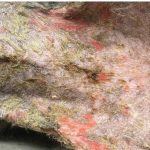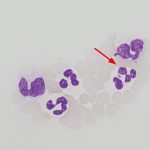- What is ovarian remnant syndrome (ORS)? Ovarian remnant syndrome is a condition that occurs when ovarian tissue remains inside the body after ovariohysterectomy. After revascularisation of the remaining ovarian tissue, the sexual cycle of bitches and queen continues and the residual ovarian tissue keep producing oestrogens.
- What is AMH (Anti Mullerian Hormone)? AMH is a glycoprotein produced by ovarian granulosa cells in females and Sertoli cells in males. In male animals, testosterone is responsible for the development of the reproductive tract, whereas AMH is needed to prevent the development of the mullerian ducts into the uterus and other mullerian structures. In female animals, AMH is not produced by the gonads during sex differentiation in early gestation, so the Mullerian ducts automatically develop and the normal development of the female genitals occurs. AMH is expressed by granulosa cells of the ovary controlling the formation of primary follicles by inhibiting excessive follicular recruitment by follicle-stimulating hormone.
- What is the purpose of AMH testing? AMH measurement is a very useful diagnostic test to detect the presence of ovarian or testicular tissue when a neutered versus intact state is difficult to determine due to a lack of history (eg. stray dogs). No stimulation test is required and the sample can be taken at any time, since females do not need to be showing signs of oestrus.
- Can false negative and false positive results occur? False positive results are very unlikely to occur and raised AMH levels are considered supportive of active gonadal tissue. False negative results may be seen in both male and female animals. In particular, it may happen that in female dogs after ovulation, the gonads start producing progesterone instead of AMH. This may result in an ovarian remnant syndrome with low AMH and high progesterone levels. For this reason, concurrent progesterone measurement should be considered, in particular when AMH is low.
This and numerous other endocrinology tests for reproduction are available at BattLab.
Sample needed: Serum
Turnaround time: 3-4 days



